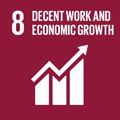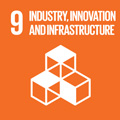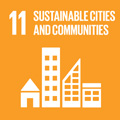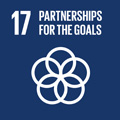- Docente: Daniela Tisi
- Credits: 6
- SSD: L-ART/04
- Language: Italian
- Teaching Mode: Traditional lectures
- Campus: Ravenna
-
Corso:
Second cycle degree programme (LM) in
Library and Archive Science (cod. 9077)
Also valid for Second cycle degree programme (LM) in History, preservation and enhancement of artistic and archaeological heritage and landscape (cod. 9218)
Learning outcomes
The course provides students with the tools to set up integrated network systems (networks between cultural institutions-museums, libraries-archives-nationwide heritage, administrative and productive frameworks). By the end of the course, students will be able to build strategies for the development of cultural heritage in a network, identifying its technical-administrative organisation, professional organisation charts, planning and coordination, functional sectors, financial plan setting, and mission statements.
Course contents
The course aims at analysing a contemporary phenomenon that is increasingly emerging as a real necessity: building museum networks and territorial systems in response to a growing supply of cultural heritage and in the presence of an urgent need for economic sustainability. This type of aggregation includes integrated management – understood as a set of economic and governmental arrangements aimed at supporting public use and preservation of cultural heritage – inspired by affordability and transparency criteria and having as its purpose the economic development of a territory which starts from tangible and intangible cultural resources. From the analysis of the Italian territorial realities emerged during the hearings of the Study Commission for complex cultural heritage management through museum networks and territorial
PROGRAMME
Course presentation - in-depth workshop – face-to-face lectures and practice - use of e-learning platform - final exam
Cultural heritage
Cultural heritage for the community. Tangible and intangible assets, museum collections and widespread assets, network of productive, economic, and social relations. Safeguard: an individual duty; accessibility: a collective right. Active protection and the possibility of participatory enhancement of cultural heritage. Unesco Conventions on cultural heritage. The Faro Convention
Integrated communication
The communicative process: components, forms, and function. Need for an all-around strategic approach from actors with varied skills and knowledge. Importance of overcoming the conflicts between humanistic and scientific knowledge. Need to adopt a new paradigm paving the way to new languages, new products and services, and a new method of accessing and using cultural heritage. The digital era as a profound cultural mutation paving the way to new scenarios.
Dialectical approach for the study of cultural heritage
The dialectical approach for the study of cultural heritage to overcome any logic of rigidity and opposition while rediscovering the strength and positivity of differences and pluralism. Adopting an exploratory attitude to encourage and support evolutionary collaborations in an enlarged vision projected towards the future. The effects of the dialectical approach on the vision of cultural heritage and integrated communication.
The Contemporary Museum
The Museum as an institution at the service of society and its development. The museum’s mission. The cultural experience between knowledge and emotion. Communication at the service of the mission. Unesco Recommendation on museums. Visitors and new audiences.
Elements of graphic and visual design for cultural heritage. The name and visual identity: from the basic elements to its applications. Contents, language, and form. Sustainable communication. Museum merchandising.
The potential of digital technologies
Promotion of the accessibility to cultural heritage. Structuring and introducing training and digital culture activities on a large scale to foster the development of territories.
Web strategy in cultural institutes. Web 2.0. Websites for cultural heritage: design (usability and aesthetics), management (sharing and participation), analysis and evaluation (quantity and quality). Web 3.0 for cultural institutions. Social networks for culture. Digital ecosystem and digital teams. Digital storytelling
Readings/Bibliography
Musei e patrimonio in rete. Dai sistemi museali al distretto culturale evoluto (a cura di) L. Cataldo, Hoepli 2014
M. Guglielminetti. Le comunità in movimento. Dal consumo alla partecipazione culturale nelle reti digitali.Carrocci Editore, 2015
Mandatory bibliography for non-attending students:
F. Donato, La crisi sprecata. Per una riforma dei modelli di governance e di management del patrimonio culturale italiano, Roma, Aracne, 2013
L. Moreschini, G. B. Ramello, W. Santagata, Un marchio per la valorizzazione dei territori di eccellenza: dai siti UNESCO ai luoghi italiani della cultura, dell'arte e del paesaggio.Catanzaro, Rubbettino, 2016
Recommended readings (optional bibliographic material for any individual further study)
Regioni e Musei: politiche per i sistemi museali dagli anni settanta ad oggi, Atti del convegno, Pisa, Scuola Normale Superiore, 4 dicembre 2007, a cura di D. La Monica e E. Pellegrini, Pisa, LARTTE, 2009
Teaching methods
Face-to-face lectures – workshops with experts – in-depth research
The lectures will take place in the classroom, in front of presentations projected on the screen which will be discussed through a critical examination. The aim of the course is to introduce the student to the main issues and to the methodological approach to the topic, in order to stimulate critical reflection by the student. Possibly there may also be seminar lessons, discussions with experts, discussion and reflection workshops and exercises aimed at stimulating practical activity.
Assessment methods
Oral exam and written assignment
The exam is carried out in oral form and provides for an evaluation out of thirty. At least 10 days before the exam, the examinee is required to complete a form for the detection and analysis of a cultural aggregation of his choice, based on a model prepared by the teacher and made available on the Virtual platform. The supervisor will ask a question about this preparatory work and the examinee is expected to answer on the merits of the research conducted. To this end, it is mandatory to present yourself for the exam equipped with the work. As per the guidelines provided by the University, please note that:
- the demonstration of the possession of an organic vision of the topics covered in class or within the exam texts together with their critical use, of an expressive mastery and of the specific language will be evaluated with marks of excellence (28-30);
- mostly mechanical and/or mnemonic knowledge of the subject, poor synthesis and analysis skills and/or a correct but not always appropriate language will lead to fair evaluations (23-27);
- training gaps and/or inappropriate language - albeit in a context of minimal knowledge of the exam material - will lead to marks that will not exceed the sufficiency (18-22).
- training gaps, inappropriate language, lack of orientation within the bibliographic materials offered during the course can only be evaluated negatively.
Teaching tools
E-learning platform
Office hours
See the website of Daniela Tisi
SDGs




This teaching activity contributes to the achievement of the Sustainable Development Goals of the UN 2030 Agenda.
